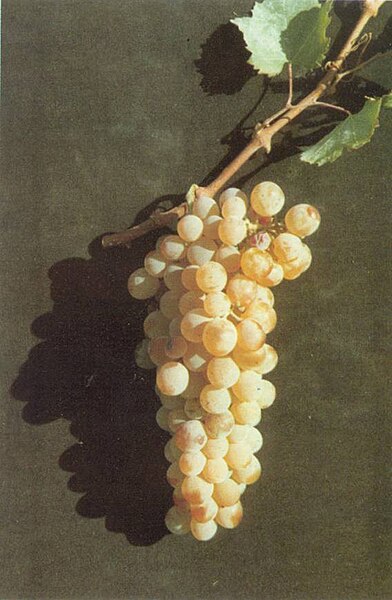Orasje
TOR_CIDA
Kroatien
Im Süden von Kroatien wird, vor allem zu den Mahlzeiten, besonders gern bevanda getrunken (schwerer, aromatischer Rotwein, mit Wasser verdünnt), in den nordwestlichen Regionen dagegen gemišt (vom deutschen Ausdruck: „gemischt“) oder špricer (von „Spritzer“ oder „Gespritzter“) genannt (säuerliche Weißweine, mit Mineralwasser verdünnt).
Plavac

Kroatien verfügt über eine Rebfläche von 60.000 ha und ist in drei Hauptregionen unterteilt: in das nördliche, kontinentale und in das mediterrane Kroatien (auch kroatisches Küstenland genannt). Weiter wird in zwölf Unterregionen unterteilt, die wiederum in Anbaugebiete unterteilt werden.
http://upload.wikimedia.org/wikipedia/commons/thumb/1/13/Croatia_topo.jpg/779px-Croatia_topo.jpg
Croatia's wine growing regions are affected by the Alps to the north, and the Dinaric Alps running down the Adriatic coast.
Feld in Makarska

Istrien

The hills of Dingac (orange), Postup[url][url][url][url] (red) on Pelje...avia.svg/125px-Flag_of_SFR_Yugoslavia.svg.png were set up, to ensure the consistent quality of the final product.
Croatian wines are classified by quality, which is clearly marked on the label.
Wines qualifying for a vintage designation, must be kept in cellar conditions longer than its optimal maturation period, and not less than 5 years from the day of processing grape into wine, of which at least 3 years in a bottle.
Im Süden von Kroatien wird, vor allem zu den Mahlzeiten, besonders gern bevanda getrunken (schwerer, aromatischer Rotwein, mit Wasser verdünnt), in den nordwestlichen Regionen dagegen gemišt (vom deutschen Ausdruck: „gemischt“) oder špricer (von „Spritzer“ oder „Gespritzter“) genannt (säuerliche Weißweine, mit Mineralwasser verdünnt).
Plavac

Kroatien verfügt über eine Rebfläche von 60.000 ha und ist in drei Hauptregionen unterteilt: in das nördliche, kontinentale und in das mediterrane Kroatien (auch kroatisches Küstenland genannt). Weiter wird in zwölf Unterregionen unterteilt, die wiederum in Anbaugebiete unterteilt werden.
http://upload.wikimedia.org/wikipedia/commons/thumb/1/13/Croatia_topo.jpg/779px-Croatia_topo.jpg
Croatia's wine growing regions are affected by the Alps to the north, and the Dinaric Alps running down the Adriatic coast.
Feld in Makarska

Istrien

The hills of Dingac (orange), Postup[url][url][url][url] (red) on Pelje...avia.svg/125px-Flag_of_SFR_Yugoslavia.svg.png were set up, to ensure the consistent quality of the final product.
Croatian wines are classified by quality, which is clearly marked on the label.
- Vrhunsko Vino: Premium Quality Wine
- Kvalitetno Vino: Quality Wine
- Stolno Vino: Table Wine
Wines qualifying for a vintage designation, must be kept in cellar conditions longer than its optimal maturation period, and not less than 5 years from the day of processing grape into wine, of which at least 3 years in a bottle.
- Suho: Dry
- Polusuho: Semi-dry
- Slatko: Sweet
- Bijelo: White
- Crno: Red (literally Black)
- Rosa: Rose
Zuletzt bearbeitet von einem Moderator:









